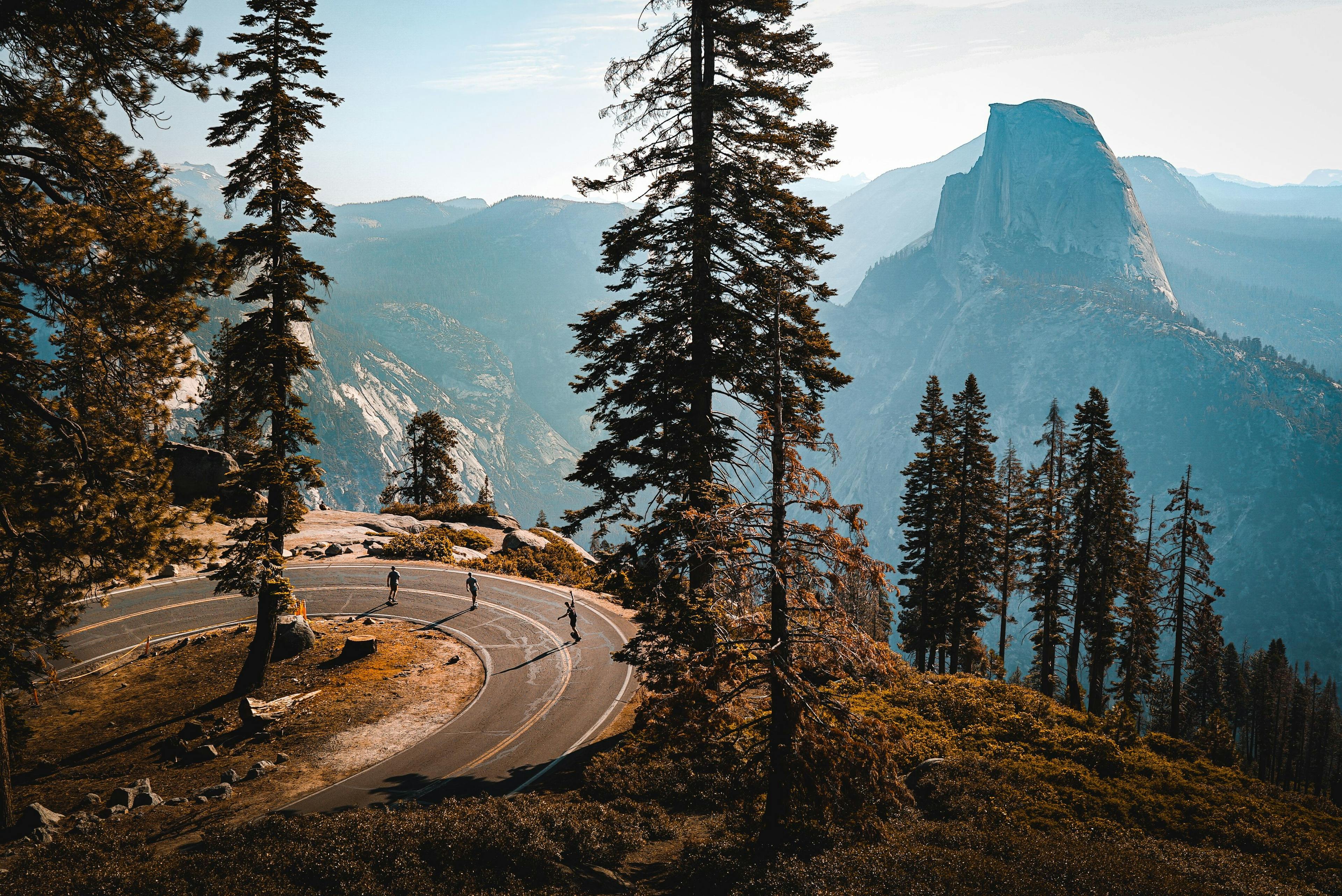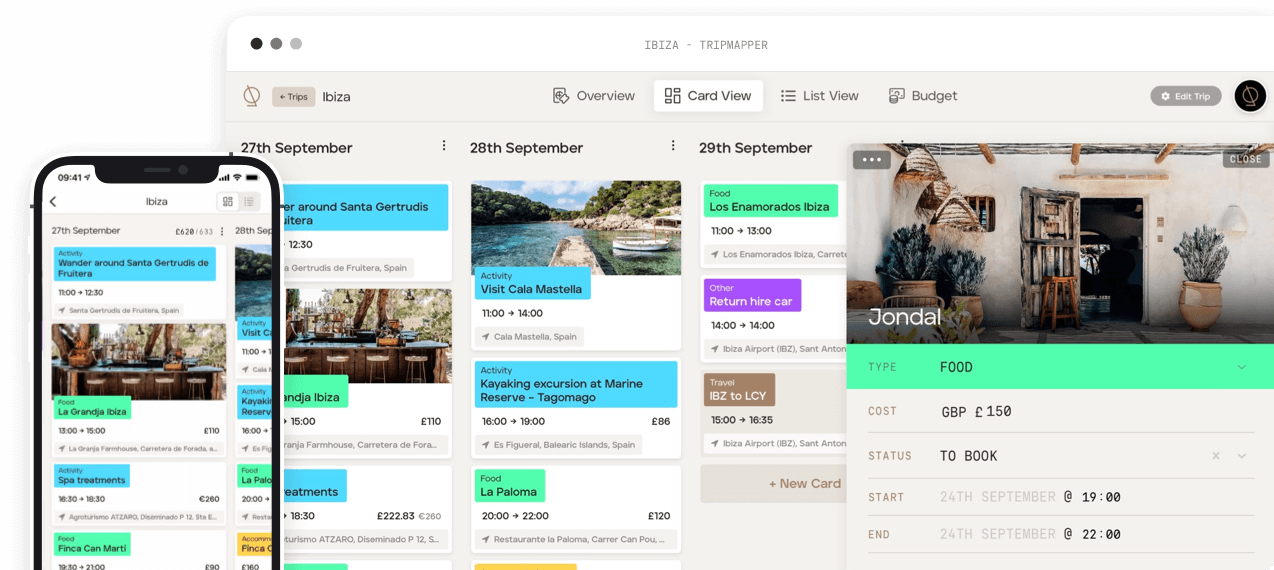Nestled in the breathtaking embrace of California's Sierra Nevada mountains, Yosemite National Park offers nearly 1,200 square miles of mountainous scenery and waterfalls. From the iconic granite monoliths of El Capitan and Half Dome to the thundering majesty of Yosemite Falls, prepare for awe-inspiring sights. Wander through ancient groves of towering sequoias, their timeless presence reminding you of the passage of centuries. Hike along the legendary Mist Trail, explore the pristine wilderness, and take a moment to enjoy the tranquility of Mirror Lake. Whether you're seeking thrilling adventures like rock climbing or a peaceful retreat in nature's quiet corners, Yosemite National Park is an extraordinary natural wonder that won't disappoint.
Products or services (including apps) featured in this blog are independently selected by the TripMapper team. However, when you buy something through our retail affiliate links, we may earn an affiliate commission.
Best Things to Do in Yosemite National Park
Your visit to Yosemite will be an unforgettable experience and well worth the visit! There are many incredible things to see and do in Yosemite National Park:
- Embark on a challenging yet fulfilling hike to Half Dome, a renowned spot in Yosemite Valley that offers stunning views.
- Marvel at the majestic granite cliffs, waterfalls, and meadows in Yosemite Valley. Don't miss Yosemite Falls, El Capitan, and Bridalveil Fall.
- Experience breathtaking views of Yosemite Valley, Half Dome, and the High Sierra by driving or hiking up to Glacier Point. This popular destination also offers remarkable sunset vistas.
- Explore Mariposa Grove, where you can wander among over 500 mature giant sequoia trees, including the famous Grizzly Giant.
- Experience stunning alpine scenery, meadows, lakes, and viewpoints during the warmer months by driving along Highway 120.
- Experience the majesty of Yosemite's waterfalls, including Yosemite Falls, Bridalveil Fall, and Vernal Fall.
- Whether you're a novice or a pro, Yosemite is a top-rated spot for rock climbers.
- Stop by Tunnel View for an iconic vista of El Capitan, Bridalveil Fall, and Half Dome.
- Discover Yosemite's High Country by hiking and backpacking through the scenic High Sierra region, which includes must-see destinations like Tuolumne Meadows, Tenaya Lake, and Cathedral Peak.
Seasons in Yosemite National Park
April to June: Rushing waterfalls (peak runoff typically occurs in May or June) and blooming wildflowers in June. While most of Yosemite remains snowy through May and into June, some hikes from Yosemite Valley, Wawona, and Hetch Hetchy are often snow-free by April, and most are usually snow-free by sometime in May. All areas of the park are usually accessible by car by late May or early June, although services along the Tioga and Glacier Point Roads often open a bit later in June.
July to September: Enjoy warm to hot temperatures with occasional rain. Some waterfalls (including Yosemite Falls) often have only a trickle or are completely dry by August. It's the busiest season, so expect crowds.
October to November: Experience beautiful fall foliage as the park transitions into autumn. Waterfalls (including Yosemite Falls) contains little or no water. Some waterfalls,run all year; however, their flow slows to a trickle. All areas of the park usually remain open through October, and sometimes into November; however, short-term closures may occur due to snow. The crowds diminish and the weather is variable.
December to March: Yosemite transforms into a winter wonderland with snow-covered landscapes. It's less crowded, but some areas and roads may be inaccessible. Some trails in Yosemite Valley are often accessible.
The park has something to offer every month of the year so the best time to visit Yosemite varies depending on what you want to do and your personal preferences. The summer months offer access to more trails and activities, but they also bring larger crowds. Spring and fall provide milder weather, beautiful scenery, and fewer visitors. Winter is ideal for a quieter experience and the opportunity to see the park covered in snow.
Travelling Around Yosemite National Park
To explore Yosemite National Park conveniently and with flexibility, it is recommended to use your own vehicle for transportation. This allows easy access to various attractions within the park, including the scenic drives of Tioga Road and Glacier Point Road. During the summer season, park shuttles are available to transport visitors between major points of interest. For a more organised experience, guided tours are also offered. Biking is also a popular option for exploring Yosemite Valley.
Best hikes in Yosemite National Park
Want to find the best trails or easiest hikes in Yosemite National Park? We recommend checking out official National Park Service website or AllTrails where you can find the perfect trail for your next trip to Yosemite National Park.
Yosemite National Park entrance fee
The cost to visit Yosemite National Park depends on the type of entrance pass or ticket you choose, the mode of transportation, the duration of your visit, and the activities you plan to do.
Yosemite National Park charges an entrance fee that grants you access to the park for a certain number of days. As of May 2023, the entrance fees were as follows:
- Private vehicle - $35.00. This fee is valid for seven days.
- Motorcycle - $30.00. This fee is valid for seven days.
- Individual (bicyclist, hiker, pedestrian, horse) - $20.00. This fee is valid for seven days.
Check the official National Park Service website for more detailed information on fees. There may be additional charges for specific activities within the park.
Depending on your trip plans, an annual 'America the Beautiful' interagency pass can be great value. As of May 2023, the annual pass cost $80 for US citizens between 16-62 or international visitors. Each pass covers entrance fees at lands managed by the National Park Service and US Fish & Wildlife Service and also standard amenity fees (day use fees) at lands managed by the US Forest Service, Bureau of Land Management, Bureau of Reclamation, and US Army Corps of Engineers. A pass covers the pass owner and all occupants in a personal vehicle at sites that charge per vehicle or, the pass owner and up to three additional adults (16 and over) at sites that charge per person. Children ages 15 or under are admitted free.
Plan your trip to Yosemite National Park
Before you visit Yosemite National Park, we recommend checking the official National Park Service website for the most up-to-date information to confirm operating hours, weather, passes and fees, and any restrictions on road access, services and activities.
Make California your destination, not only Yosemite. Plan your trip using TripMapper, a travel itinerary app that also calculates your vacation budget - the perfect travel planning app! Available on the web and mobile. Start planning your trip to Yosemite today!
If you're unsure about what to bring for your trip to Yosemite National Park, take a look at our packing list for national parks. It should help you prepare for your Yosemite adventure!
AFFILIATE LINK: Products (including apps) or services featured in this blog are independently selected by the TripMapper team. However, when you buy something through our affiliate links, we may earn an affiliate commission.

